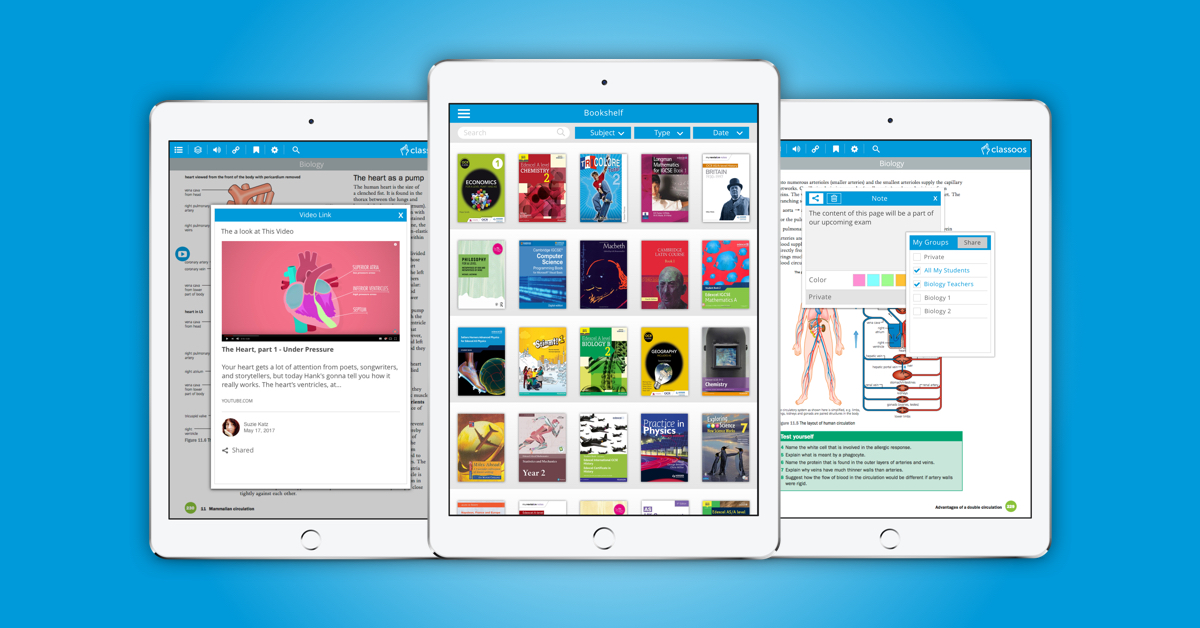I wish I’d had digital textbooks back in the day. It would have saved me a lot of time and embarrassment at the photocopier, with scissors and glue sticks and piles of neatly cut excerpts from prized texts balancing delicately on A4 sheets ranged across tables, each slip of paper fearful of the slightest breeze as they waited, poised. Ah, those days of literally cutting and pasting!
All this, of course, went into overdrive come exam season, as we desperately tried to reduce each textbook to what could be learned with dwindling time, hastily assembling revision guides and the like to help and reassure students before they finally disappeared on study leave.
All the while the clock tutted in the background: “You’re running out of time!”
“Will we get through everything?” – that’s the question that keeps many teachers awake at night. And that’s one thing textbooks offer: reassurance. Written by examiners, they cover all the bases, no stone unturned. No alarms and no surprises on exam day!
Revision guides, weightless or otherwise, are flying off the shelves right now for that very reason. And students can access digital textbooks everywhere they go. They’re available on all their devices, anytime, anywhere, whether they’re on or offline.
Here are 5 top tips to supercharge revision.
1. Work through exam-style questions in revision classes
It’s all about match practice at this late stage, and this is often done best in groups. Organise lessons around compiling model answers to common questions. Collaborative revision is powerful. Many brains are better than one. Pupils plug each other’s knowledge gaps. The more able learn by teaching; weaker pupils learn by observing until they grow in confidence and are able to do more for themselves.
With digital textbooks, you can then pin their “model answers” to the textbook, to supplement what’s already there.
2. Prepare your own exam-style questions for pupils to do on their own
Pitch exam-style questions to suit your students, based on how they do with the above. You will wish to simplify exercises to boost the confidence of weaker students or ramp up the difficulty for the highflyers.
With digital textbooks you can simply copy and paste text to Word, and then tweak to suit each individual’s needs.
3. Pin your own revision notes to the textbook
Revision is all about reduction. That’s what all the cutting and pasting was about. You can rip up the digital textbook and make it your own, cutting and pasting key sections as you see fit, to compile revision lists, key quotations, essential vocabulary, or subject terminology, to name just a few examples.
Quicker still, you can bookmark, add notes, or highlight key passages. You may even colour-code your own highlighting. It’s so easy. Exam tips could go in yellow, key words in green, killer quotes in red, for instance.
4. Curate the very best online revision advice
Again, reduction is the name of the game. There’s no time to lose sorting the wheat from the chaff. Now is not the time for students to lose themselves down the rabbit hole of YouTube or TikTok research!
Provide links or pin to your shared digital textbook all the best sources: exam board specifications and examiners’ feedback, resource websites, YouTube explainer videos from the likes of the excellent Mr Bruff and Mr Salles for English.
5. Keep students up to date with last-minute tips, tricks, and reminders
Circumvent a flurry of panicked eleventh-hour emails by pinning answers to FAQs with notes on your digital textbook. Remind pupils which exam questions have popped up before and when; remind them which sections are irrelevant for their particular exam specification. You can’t remind students about this stuff often enough. Let’s not forget, we now have scaled-down exams due to Covid and lost teaching time. We’ve known, for several weeks now, what is and what isn’t on the exam. Some pupils, however, are a little slower on the uptake!
Digital textbooks allow teachers to make blindingly obvious to every pupil what they need to revise, and what they can leave well alone.
And a bonus tip for good luck…
6. Offer constant reassurance in the closing stages
As well as reminders, we all need reassurance:
“Morning, 5A. Good to see you’re all busy with revision. Great to see so many of you ace that last exercise. Don’t forget to include lots of quotations and language terms in your essays. You’ll find a useful glossary on page 99, which I’ve highlighted in light blue.”
Use emojis if you like, to indicate where they’re at with their revision, as we see them go from ????to ????.
Time is tight, but there’s still time
And what we do in these final weeks will make all the difference. Students need reassurance and regular reminders at times like these.
Here’s wishing you and them all the best in the run-up to exams. Take heart. We’re on the home straight.





